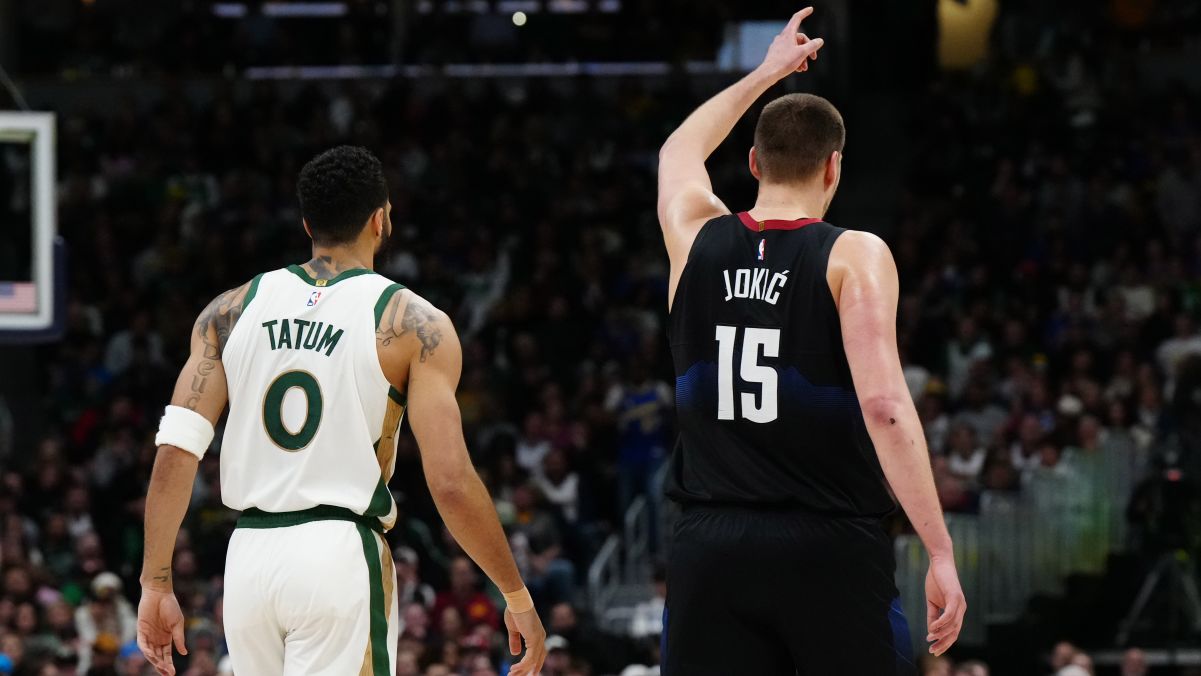The NBA announced late Monday night that it had reached agreement with the Players Association on some of the key details regarding the start of the 2020-21 season.
Most of that announcement simply confirmed what we already suspected: a 72-game season starting on December 22 with the salary cap ($109.1 million) and luxury tax ($132.6 million) remaining flat from last season. The NBA noted that free agency will begin at 6 p.m. on November 20 with teams able to formally sign players at noon on November 22.
Forsberg: Ainge's busy to-do list in truncated NBA offseason
Stay in the game with the latest updates on your beloved Boston sports teams! Sign up here for our All Access Daily newsletter.
Tucked inside the middle of it was an explanation about a new system that will be used to divide basketball related income (BRI) and that’s the important part for the Boston Celtics because:
1) Gordon Hayward has even more incentive to trigger his $34.2 million player option
Here’s the nuts and bolts: Each year the NBA puts 10 percent of all players’ salaries in escrow in case the league doesn’t reach its expected BRI. There had been fear that, given the ongoing pandemic, the NBA might request to escrow as much as 40 percent of players' salaries next season.
For someone like Hayward, that would have taken a major bite out of his paycheck. The NBA said Monday that any necessary salary reductions from a lower BRI would be spread out over as much as three seasons and never at more than 20 percent in a single season. Hayward doesn’t have to worry about losing a monster chunk of salary.
Boston Celtics
Now, it’s unlikely that money is the biggest factor in Hayward’s decision. He can still opt out if he yearns for the security of a long-term deal — whether that’s in Boston or elsewhere — or if he simply needs a change of scenery. But opting in and reestablishing his value with a quality season is Hayward’s most lucrative path forward and there’s no cumbersome escrow to mess with that.
2) Celtics could catch a tax break this year if revenues come in low
The NBA noted in its announcement that, “the salary cap and tax level will increase by a minimum of 3 percent and a maximum of 10 percent over the prior season. Teams’ tax payments will be reduced in proportion to any BRI decreases.”
If Hayward opts in, the Celtics will almost certainly be a taxpaying team. The stiff penalties make it untenable to exceed that tax line and every dollar is scrutinized. It’s enough to make a team err on the side of spending thrifty on depth options.
But if the NBA reduces tax payments in proportion to BRI decreases, then the check that owner Wyc Grousbeck has to cut the league at year end might not be quite as tough to stomach. It gives Danny Ainge a tiny bit of flexibility with roster construction.
Celtics Talk Podcast: Jerome Allen on his new book and Brad Stevens spitting 90s rap lyrics | Listen & subscribe | Watch on YouTube
3) The size of Jayson Tatum’s payday will hinge on next season’s cap increase
For Tatum, the salary cap increase for the 2021-22 season could put as much as an extra $13 million in his pocket over the life of the five-year maximum salary extension he’ll sign this offseason. That’s not a huge number when you’re talking about a deal that could reach over $200 million in total value — but it’s something.
Now, there’s two things at play here: Both the size of the cap jump (between 3-10 percent) and the percent of the cap that Tatum will sign for (he’s eligible to earn from 25 to 30 percent of the cap if he triggers Rose Rule eligibility).
Forsberg: C's title hopes hinge on Tatum's development
Essentially, Tatum is projected to earn somewhere from roughly $163 million to $209 million based on the cap jump and what percentage of the cap he obtains. Our buddy Ryan Bernardoni has an easier-to-digest look at the potential numbers here that shows all the various possibilities.
Either way, Tatum is set for the biggest total payday in Celtics history -- but getting fans back in seats this season could aid the total amount of money he can earn over the next five years.


